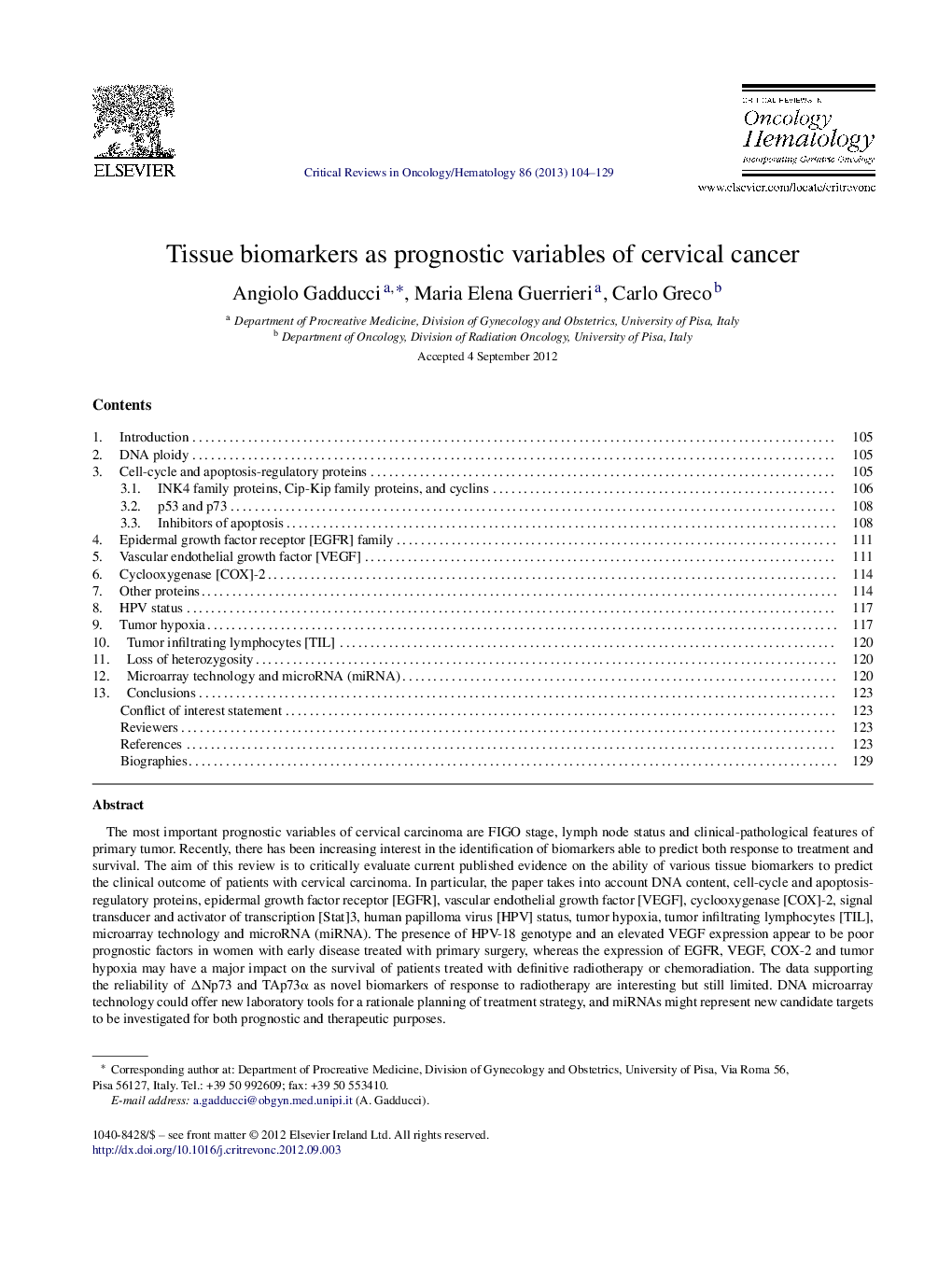| Article ID | Journal | Published Year | Pages | File Type |
|---|---|---|---|---|
| 3328879 | Critical Reviews in Oncology/Hematology | 2013 | 26 Pages |
The most important prognostic variables of cervical carcinoma are FIGO stage, lymph node status and clinical-pathological features of primary tumor. Recently, there has been increasing interest in the identification of biomarkers able to predict both response to treatment and survival. The aim of this review is to critically evaluate current published evidence on the ability of various tissue biomarkers to predict the clinical outcome of patients with cervical carcinoma. In particular, the paper takes into account DNA content, cell-cycle and apoptosis-regulatory proteins, epidermal growth factor receptor [EGFR], vascular endothelial growth factor [VEGF], cyclooxygenase [COX]-2, signal transducer and activator of transcription [Stat]3, human papilloma virus [HPV] status, tumor hypoxia, tumor infiltrating lymphocytes [TIL], microarray technology and microRNA (miRNA). The presence of HPV-18 genotype and an elevated VEGF expression appear to be poor prognostic factors in women with early disease treated with primary surgery, whereas the expression of EGFR, VEGF, COX-2 and tumor hypoxia may have a major impact on the survival of patients treated with definitive radiotherapy or chemoradiation. The data supporting the reliability of ΔNp73 and TAp73α as novel biomarkers of response to radiotherapy are interesting but still limited. DNA microarray technology could offer new laboratory tools for a rationale planning of treatment strategy, and miRNAs might represent new candidate targets to be investigated for both prognostic and therapeutic purposes.Moreover, the assessment of different types of TIL and their ligands in tumor biopsies could enable the identification of a subset of high-risk patients, paving the way to novel immune therapies aimed at blocking T-reg cell activity.
